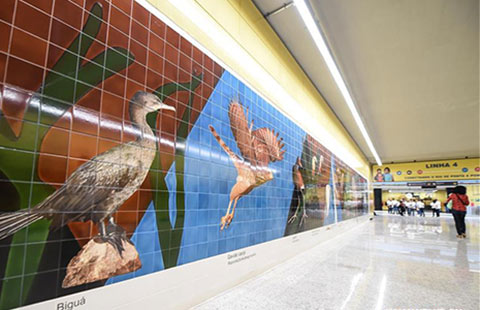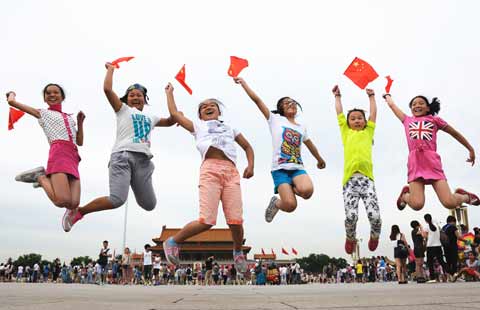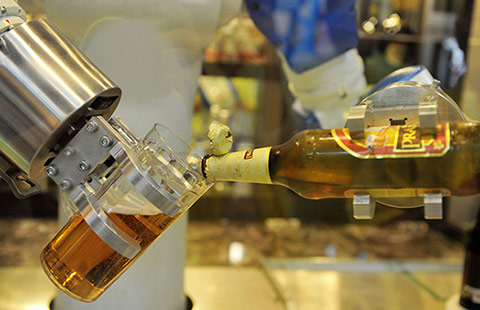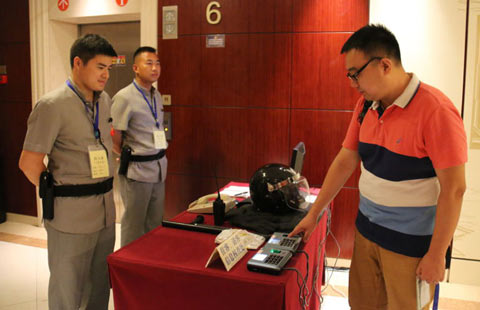Mogao Caves set record tourist numbers
(Xinhua) Updated: 2016-08-03 10:21LANZHOU - The Dunghuang caves, which contain some of China's finest ancient Buddhist art, sold out yet again on Tuesday with 6,000 daily tickets and a further 12,000 emergency tickets by 10 am as the heritage site tackles its busiest time of the year.
It was the second time in a week for the site, also known as the Mogao Caves, situated in Northwest China's Gansu province, to sell out.
Last Wednesday, the caves received 19,301 visitors, a record for a single day this year. There has also been a rise in foreign tourists at the caves, with the site receiving 55 foreign visitors on Sunday, compared with 27 on the same day last year.
Stanislav Mukhin, a Russian tourist, said he was very impressed by the cave frescoes. "The tourism service is very good," he said.
"We bought emergency tickets. We are very lucky to be able to enter the caves," said Jiang Yifei, from southwest China's Sichuan Province.
The 1,600-year-old Mogao Caves are home to more than 2,000 colored sculptures and 45,000 square meters of frescoes -- all found in a series of 735 caves carved along a cliff by ancient worshippers. In 1987 it became China's first UNESCO World Heritage Site.
In recent years, numbers of tourists have soared in the caves, situated along the ancient Silk Road route, thanks to their growing fame both at home and abroad.
In the first seven months of the year, 598,000 tourists visited the caves, up 31 percent year on year, according to statistics from Dunhuang Academy, the authority in charge of the research, protection and management of the site.
The tourist boom has also increased due to the launch of easier transport links to Duanhuang this year, including new trains from Beijing, and Yinchuan, capital of Ningxia Hui Autonomous Region, as well as flights from Guangzhou.
The Belt and Road Initiative and replica exhibitions of the caves both in China and abroad have also helped cement their reputation as an outstanding tourist site.
Since 2014, the Mogao Caves have set a daily limit of 6,000 reserved tickets plus an extra 12,000 emergency tickets to cater to the growing number of tourists during the peak travel season.
Tourists holding different tickets visit different caves in order to reduce human impact on the site.
Years of research by Dunhuang Academy shows the density of carbon dioxide in a cave can rise by five times if 40 visitors stay in it for half an hour.
A sustained high level of carbon dioxide in the caves poses a threat to the sculptures and frescoes, as well as harming the health of tourists, said Li Ping, deputy head of the administration committee of the Mogao Caves.
"We hope tourists avoid the peak season if they can, for heritage protection and the comfort of tours," she said. For preservation purposes, the caves have more than 60 technical staff dedicated to restoration of the frescoes, Li said.
In May this year, the caves began to provide a digital experience for tourists, featuring video clips, archive materials, and a 360 degree view of the caves that can be found on e-dunhuang.com.
- US punitive duties on solar imports from China disrupt industry chain: MOC
- Samsung Electronics unveils new curved-screen Galaxy Note phone in H2 sales push
- Draft of B20 Policy Recommendation Report completed: Host committee
- Glimpse into the work and life of G20 guards
- Rio's key Olympic transport metro line uses China-made trains
- Volkswagen sales halted amid forgery allegations
- Embassy camps win Chinese over
- Airborne kids broaden ken during vacation


















